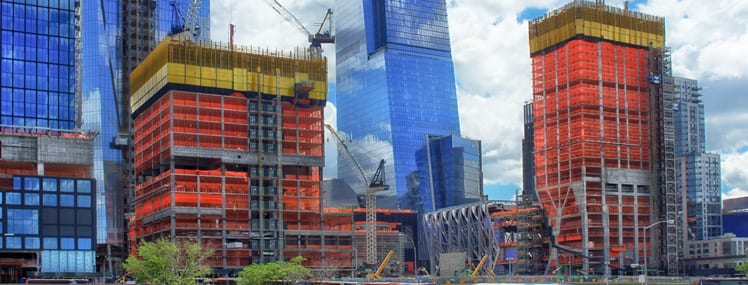BY LEHRER CUMMING
OCTOBER 27, 2020 9:18 AM
As the world continues to move forward with the uncertainty of the new normal and the effects of the COVID-19 pandemic, New York City is proving to be as resilient as ever. The New York building market, currently feeding off the current workload and backlog, remains on top as the largest national construction market months into this challenging time.
While the current workforce seeks to find a balance with current and projected construction volume, the sectors themselves are also seeing some dramatic changes.
Hospitality, commercial office, high-rise residential, retail, and higher education have been negatively impacted since the pandemic started. “Projects that are moving forward in these challenging times are benefiting from a very competitive bid environment,” said Gavin Middleton, chief operating officer at New York City-based project management firm Lehrer Cumming. “Subcontractors are keen to secure additional backlog for 2021 and beyond, and we are seeing a lot of competition for contracts and some compelling award numbers.”
Offsetting these industry contractions, however, are other sectors that are demonstrating significant growth, including life sciences, advanced manufacturing, logistics, data centers, and last-mile delivery warehousing. The long-established shortage of qualified labor within the industry has only been further exacerbated by the present pandemic, leaving many general contractors, construction managers, developers, and project management firms seeking additional field staff.
Before the emergence of COVID-19, projections for 2020 and 2021 indicated a slight two percent reduction in construction volume each year in the national markets. Within NYC specifically, construction spending remains somewhat constant for the same timeframe, despite a drop in the residential sector – a key driver for the local market during the past three to five years.
As we start looking ahead, construction employment within the New York market is projected to remain constant with a slight increase from 2020 to 2022, as per the New York Building Congress’ 2020-2022 New York City Construction Outlook. As we continue, at least for the near future, the shortage of qualified labor will remain a key challenge for the industry to address.
“The industry will need an influx of individuals that will need to be trained and mentored by seasoned leadership to help replace the outgoing retirees and those leaving the industry due to COVID-19 concerns,” said Gus Maimis, an executive vice president at Lehrer Cumming.
Material pricing has also seen similar sporadic changes over the last several months. However, a bit of positive news is that with materials, in general, we expect to see a plateau or a slight drop in price for the first time in almost a decade. Two materials to keep an eye on in terms of cost fluctuations are concrete and lumber. Both of their prices have recently jumped, as production facilities struggle to restart and as projects look to alterative green construction methods, which have put supply chains under additional strain.
There is a lot of uncertainty within the market at present and competing forces are at work impacting the cost of building in New York. “Given the current status, the level of local market confidence and the political climate, the construction industry is anticipated to remain somewhat cautious in the short term. The timing of vaccines will be key to the full rebound of the industry, and it is likely that once vaccines are readily available, there will be a surge in activity and increases in spending,” Middleton concluded.

